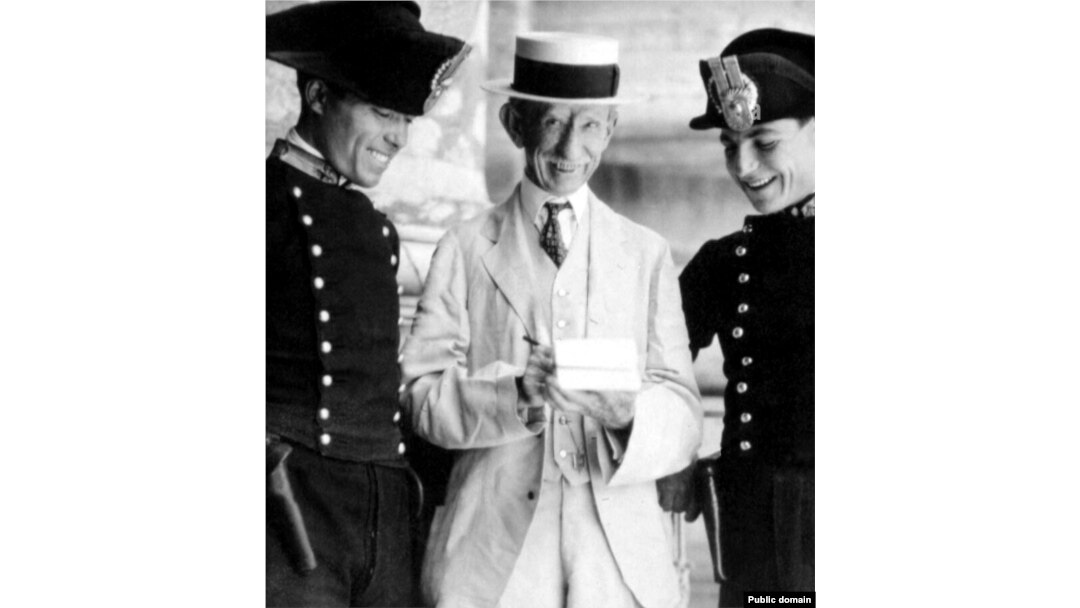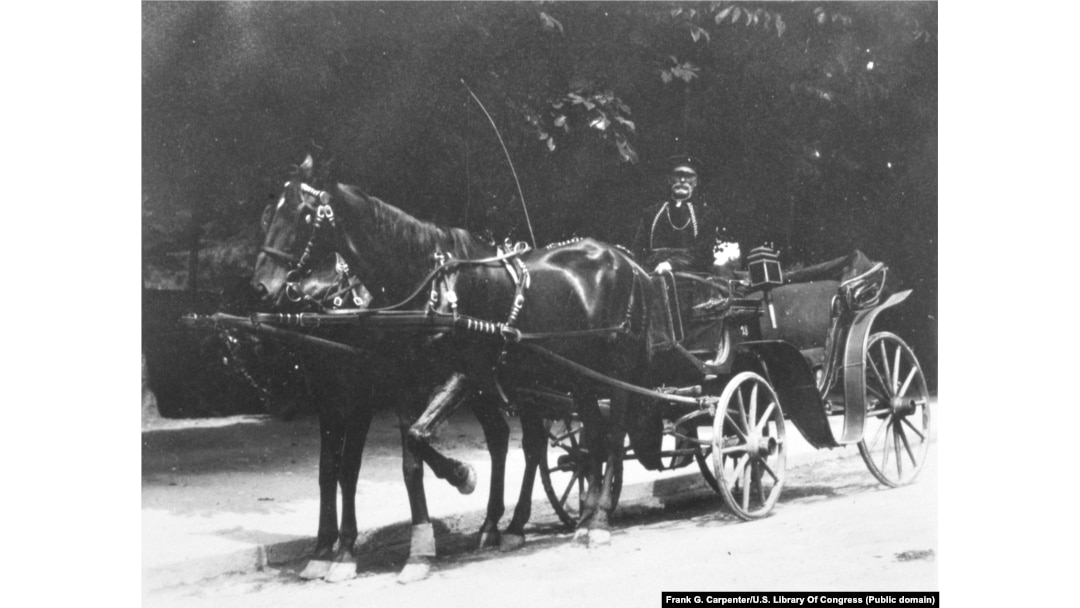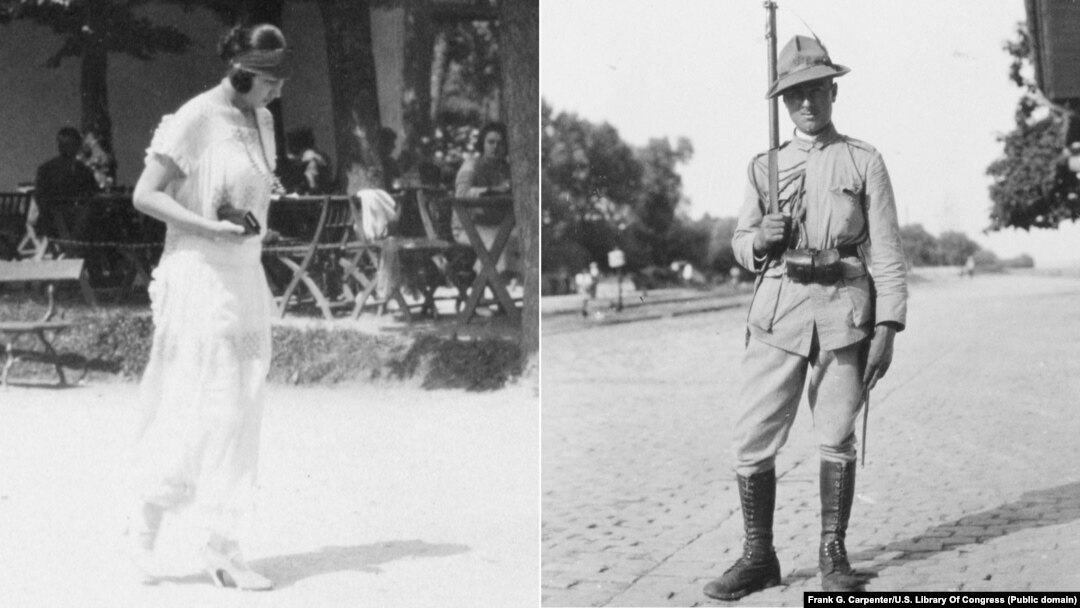A century ago, journalist Frank G. Carpenter traveled through Romania capturing photos and colorful, sometimes lecherous, descriptions of the people and places he encountered.

Frank G. Carpenter (pictured above in Rome in 1923) was a writer and photographer whose reports from far-flung corners of the world enthralled readers of his widely syndicated "letters" home to the United States. His popularity enabled him to travel nearly continuously through the final decades of his life, writing books, taking photos, and scribbling notes that he condensed into punchy, sometimes dubious, photo captions.
Below are 19 of the photos and captions Carpenter made while traveling through Romania in 1923 that are now housed in the U.S. Library of Congress archive. The images offer a fascinating insight into both the "Greater Romania" era of relative wealth and calm between the two world wars, and an American perspective toward the "Old World" of Europe a century ago.
The original captions used below sometimes lack location information. Several have been edited to change spellings or grammar.

A driver of the old school. He hopes to die before the inartistic automobile supplants his elegant carriage with prancing teams of horses on the boulevards of Bucharest. Why call a taxi when you can be wheeled around in royal state in this carriage with the velvet-robed driver for 20 cents an hour? Everyone can be a prince or princess for one hour.
Drivers of these carriages were known as "birjar" and were notorious for their profanity, leading to the Romanian phrase still in use today: "He/she swears like a birjar."
In the late afternoon, the narrow Calea Victoriei Street of Bucharest sparkles with fine clothes and the jewelry of beautiful women, and male eyes are wide open to feast on the scene.
Nothing to do all day but watch a cow. That is the job of this Romanian peasant boy. It is during the long hours that he plays his flute and learns the songs of the birds.
Bobbed hair has caught the youth of Romania and jazz music has not been far behind. Here is an aristocratic maid in peasant costume at a wayside resort in Romania. At the train stations one is tempted by pretty peasant girls with delicious fruits in twig-bound baskets of their own making.
The Military Club of Bucharest. Army life is popular here as there is so much to do. Few years of peace are allowed in these Balkan states and eastern monarchies.
The military building was completed in 1911 and continues in its role as an army "club" today.
A Romanian beauty out for a stroll in Sinaia. Tall, dark with jet-black hair and eyes, they account for the Romanian man's distaste for work and desire for pleasure, which makes Bucharest famous as the "gay Paris of the east."
"I do." A Romanian emigrant at the U.S. Consulate in Bucharest makes out an application for a trip to [America], the land of advertised golden bricks. Hundreds are turned away daily because of the oversubscribed quota.
Romanian schoolgirls want to know about "flappers." They too are feeling the wave of feminine emancipation that has captured even that man's stronghold of Constantinople.
The Turkish city of Istanbul was known as Constantinople until 1930.
Romanian girls are good to look at but they prefer their Latin brothers to the cold Anglo-Saxon.
With hard work and little play, the peasant women age early. This woman looks 55 but is 35.
In another photo description of a young peasant woman, Carpenter claimed "an olive twig must be held over her head" on her wedding day. If the stick is dropped, "bad luck will be her lot, and the gaiety will be dispelled in a jiffy," he wrote.
Romania does not have a widespread history of olive growing, so the story may have been a fabrication, or based on what Carpenter saw during a previous trip to Greece.
Romanian peasant type.
Brother and sisters work side by side in Romania. The gypsies are good masons and builders, the men as well as the women.
Gypsies in Romania were historically more well-known for their metalcraft, rather than masonry.
Palaces in Bucharest are elaborate. This is the old home of the beloved Carmen Sylva or first queen of Romania.
The original caption above is incorrect; the image, in fact, shows Bucharest's Cantacuzino Palace, built in 1902 for former Romanian Prime Minister Gheorghe Cantacuzino. Today, the building houses a museum.
Romanian children of the better classes.
The University of Bucharest showing Byzantine-style architecture.
This image, in fact, shows the Central University Library of Bucharest, one of the centerpieces of the Romanian capital. The building is generally considered an example of Beaux-Arts, rather than the Byzantine architectural style, as Carpenter claimed. The building was badly damaged during the 1989 Romanian revolution but has since been rebuilt.
A Romanian soldier. The bayonet is unusually long in this army.
Chocolate sundae. Here is the ice cream and in the tin can is the chocolate syrup. By the appearance of the man on the right, business is poor.
Frank G. Carpenter visits an old church in Transylvania with the wife and daughter of our American minister to Bucharest. Inside this edifice are hundreds of valuable Turkish prayer rugs, reminders of the days when the [Islamic] crescent rode high over Central and Eastern Europe up to the gates of Vienna.
The unnamed building is the Black Church, in the center of Brasov.
Even the nursemaids of Romania are attractive. Here is a group in Sinaia.
Carpenter died of an unspecified illness in China in 1924, just one year after these photos were taken.
A U.S. newspaper at the time marked his death by praising his "genius for finding out things, and the things that interest everyone, and then for writing them interestingly."


